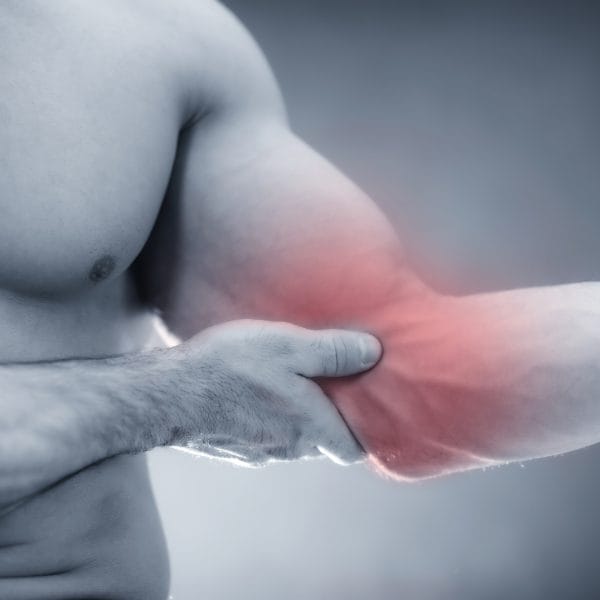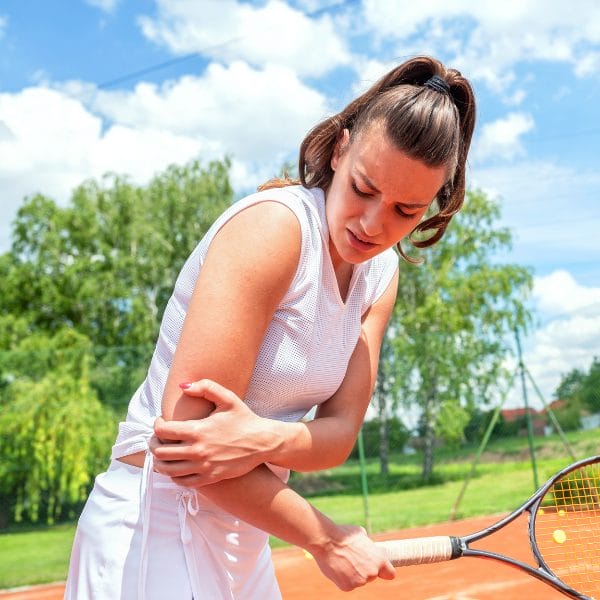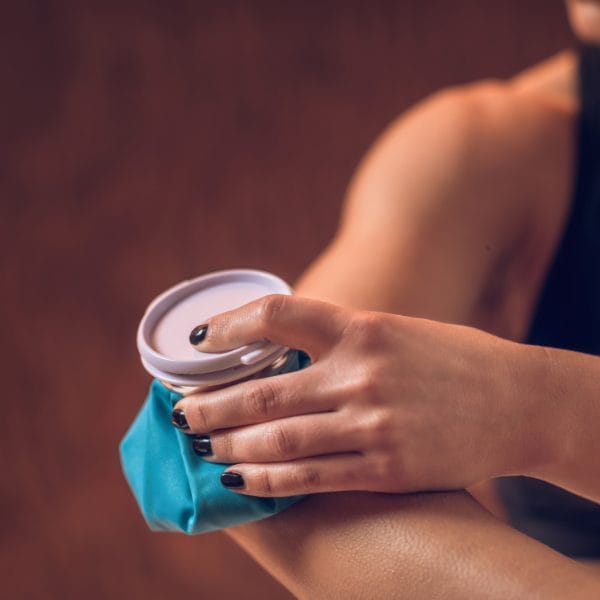Tennis Elbow and Golfer's Elbow: the Difference, Treatment, and Prevention
Tennis elbow and golfer's elbow are two of the most common elbow injuries.
PostureGeek.com Tweet

Tennis Elbow and Golfer’s Elbow are two of the most common elbow injuries. They are both caused by repetitive motions and can be very painful. In this blog post, we will discuss the difference between these two conditions and their treatment and prevention.
What's the difference between Tennis elbow and Golfer's elbow?
Tennis elbow (lateral epicondylitis) and golfer’s elbow (medial epicondylitis) are caused by repetitive motions.
Tennis elbow is a condition that affects the outside of the elbow. In contrast, golfer’s elbow affects the inside of the elbow.
In addition, tennis elbow is typically caused by repetitive use (repetitive strain injury) of the arm muscles, while golfer’s elbow is often caused by repetitive use of the hand and fingers.
What is an epicondyle?
An epicondyle is a bony bump on the end of a bone. The lateral and medial epicondyles are located on the elbow and are where these two types of elbow injuries occur.
What is Golfer's elbow?

Golfer’s elbow (Medial Epicondyle) is a type of tendonitis that affects the tendons on the inside of the elbow. It is caused by repetitive hand and fingers and gripping motions such as those used in golf. It can, however, often happen with other work too. It can be very painful but typically does not require surgery unless there is nerve damage or a tear to the medial tendon that attaches to the inside of your elbow.
What can I expect if I have golfer's elbow?

If you have golfer’s elbow, you can expect to experience pain and swelling on the inside of your elbow. You may also have difficulty gripping things or rotating your arm. The pain will likely worsen with activity, and you may find that your symptoms improve with rest.
How is it treated?
Golfer's elbow can be treated with a combination of ice, rest, and physical therapy.
PostureGeek.com Tweet

Golfer’s elbow can be treated with a combination of ice, rest, and physical therapy. While surgery may be rare, if it is necessary, it will typically involve repairing or reconnecting the ruptured tendon.
Can I prevent Golfer's elbow?
There are a few things you can do to help prevent Golfer’s elbow, including:
- Taking breaks during repetitive tasks
- Stretching before and after activities
- Using the proper form and technique when playing golf or doing other activities that could cause Golfer’s elbow.
Who does it affect?
Golfer’s elbow can affect anyone, but it is most common in people who participate in activities that involve repetitive use of the hand and fingers, such as golfer’s, painters, carpenters, and musicians.
How is golf elbow diagnosed?
Golfer’s elbow can be diagnosed based on your symptoms and a physical examination. Imaging tests, such as X-rays or MRIs may also be ordered to help confirm the diagnosis.
What's the treatment for Golfer's elbow?
Golfer’s elbow can be treated with a combination of ice, rest, and physical therapy. If surgery is necessary, it will typically involve repairing or reconnecting the ruptured tendon.
What is Tennis Elbow?
Tennis elbow (Lateral epicondylitis) is an inflammation or irritation of the tendons that attach to the outside of your elbow.
PostureGeek.com Tweet

Tennis elbow (Lateral epicondylitis) is an inflammation or irritation of the tendons that attach to the outside of your elbow. It usually occurs when you overuse your arm without giving it adequate rest time – this can happen while playing Tennis and other activities like painting walls.
What can I expect if I have Tennis elbow?
If you have Tennis elbow, you can expect to experience pain and swelling on the outside of your elbow. You may also have difficulty gripping things or rotating your arm. The pain will likely get worse with activity, and you may find that your symptoms improve with
Can I prevent Tennis elbow?
There are a few things you can do to help prevent Tennis elbow, including:
- Taking breaks during repetitive tasks
- Stretching before and after activities
- Using the proper form and technique when playing Tennis or doing other activities that could cause Tennis elbow.
- Make sure to maintain healthy and strong muscles
How is Tennis elbow diagnosed?
Tennis elbow can be diagnosed based on your symptoms and a physical examination. Imaging tests, such as X-rays or MRIs may also be ordered to help confirm the diagnosis.
What's the treatment for Tennis elbow?
With Tennis Elbow It's critical not to repeat the activity that injured you.
PostureGeek.com Tweet

It’s critical not to repeat the activity that injured you. Treatment may include the following:
- Ice
- Rest
- Rehabilitative exercises to improve the affected area
- Anti-inflammatory medication
Please consult with your health care provider if these measures do not assist. In addition, further options may be considered, such as bracing the arm to keep it still and, in extremely rare cases, surgery.
Finally
Tennis elbow and golfer’s elbow are different injuries of the elbow. Tennis Elbow is an inflammation or irritation of the tendons that attach to the outside of your arm. At the same time, Golfer’s Elbow is a pain to the inside of your forearm near where the tendon attaches to your hand.
Tennis elbow can be treated with rest, ice, and physical therapy; meanwhile, Golfer’s elbow may need surgery if nerve damage or tearing is involved. The best way to prevent either injury is by taking breaks during repetitive tasks like painting walls or playing Tennis. We hope our blog has helped you identify which type of tendonitis you have- now, all you have to do is schedule some time for R&R!
PLEASE NOTE
PostureGeek.com does not provide medical advice. This information is for educational purposes only and is not intended to be a substitute for professional medical attention. The information provided should not replace the advice and expertise of an accredited health care provider. Any inquiry into your care and any potential impact on your health and wellbeing should be directed to your health care provider. All information is for educational purposes only and is not intended to be a substitute for professional medical care or treatment.
